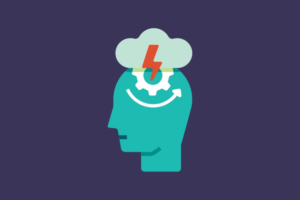Companies adopt many HR metrics to protect and develop their most valuable asset – their people. Out of all the available HR Metrics, talent analytics is one of the most effective. Talent analytics, also known as recruitment analytics, has grown in popularity. However, it remains a relatively new concept and is widely undervalued in HR. According to Deloitte research, only 4% of organisations have talent analytics capabilities.
While finding and hiring the right fit is critical, retaining those candidates over time is arguably even more vital. Businesses require comprehensive people analytics that span the entire employee lifecycle, from onboarding to separation. This rich human data can be combined with talent analytics to improve recruitment strategies, ensure employee retention, and promote long-term success.
To help you implement talent analytics, in this article, we’ll delve into what talent analytics is and what types of data you should collect.
What is Talent Analytics
Talent analytics, or talent management analytics, is a process through which an organisation measures and analyses the performance of its workforce, more often than not in conjunction with business goals. Talent analytics enables your recruitment team to measure and evaluate their efforts to adjust their strategy based on data rather than relying on instinct or experience alone.
The term talent analytics was coined by Josh Bersin in 2011, who described it as “the science of figuring out what works and what doesn’t work.” While the term is relatively new, its history can be traced back to Frederick Taylor’s time-and-motion studies in the early 1900s to the present-day big data analysis.
Talent analytics measures the people aspects that matter most to your business and balances efficiency with employee engagement to boost productivity. However, talent acquisition teams must first understand what type of talent data they should be collecting and connect it to broader business goals for analytics to be helpful.
Examples of Talent Analytics
Talent analytics can be used for various HR purposes, but it always involves collecting and reporting employee data. A reporting dashboard with critical HR metrics and regular employee surveys or tests are typical components of a talent analytics strategy.
For example, Accenture, Intel, IBM, and Twitter use sentiment analysis from surveys or internal chat messages to assess how their employees feel about the company. The data is then used to identify problems or opportunities missed during standard review processes.
During Covid-19, the National Australia Bank used talent analytics daily to understand how their employees were doing, how many were absent and if there were any concerns. This allowed them to provide the care their employees needed during challenging times, such as managing workloads during periods of high absenteeism and working remotely.
Other businesses use talent analytics to build internal platforms that match current employees to open positions within the organisation based on their skills. Talent analytics can also assess the characteristics and abilities of your company’s top-performing employees. You can use this information to generate benchmarks and test candidates on those skills through a pre-employment assessment.
What are Talent Analytics Metrics
Talent analytics is the analysis of employee data, specifically relating to the recruitment process, facilitated by using software and metrics to make better business decisions.
Talent analytics collects information about a company’s current workforce and potential employees, allowing talent acquisition teams to better understand what motivates their existing and potential employees. This is in addition to learning more about their strengths and weaknesses. This information is critical for implementing strategies that boost performance and productivity.
Once a company gathers the data, they need to understand key metrics and how it can apply them to make optimal business decisions. There are typically three types of talent analytics metrics:
- Recruitment Analytics
- Feedback Analytics
- Optimisation Analytics
Recruitment Analytics
Recruitment analytics provide insight into potential hires by analysing their skills and other information to create a shortlist of the top candidates. It also assists the company in making an unbiased decision based on the data. Talent metrics gathered across open positions over time will yield predictive hiring data that will provide you with invaluable insight to help improve hiring decisions.
Feedback Analytics
Feedback analytics focuses on the current workforce and establishes whether teams are performing well, if employees have the suitable skillset, and if talent is in the right places. It is also an essential tool for succession and growth planning. Continuous feedback analytics can help you identify employees who can be upskilled or have leadership potential, whether their natural talents are better suited to another role, and whether there are any employees or factors affecting productivity.
Optimisation Analytics
Optimisation analytics combines data and predictions from recruitment and feedback analytics to generate predictive data that allows for informed decision making. Management can use optimisation analytics to assess their current situation, identify areas that require change or improvement, and take decisive action.
How is Talent Analytics Used in Recruitment?
Employees are a vital source of competitive advantage, so attracting top talent is critical to the success of any business. With the right team in place, you can increase productivity and provide the high-quality customer service required to drive profitability. As a result, attracting and hiring the best possible employees should always be a priority for your company. Here are five ways talent analytics can benefit the recruitment process.
- Improve Quality of Hire
- Predict the Time Required to Fill Roles
- Identify Skills in Existing Teams and any Talent Gaps
- Improve the Candidate Experience
- Reduce Bias in the Hiring Process
Improve the Quality of the Hire
Ideally, every position should be filled by a high-quality candidate who will stay and thrive. Talent analytics examines how many applicants were qualified, retention rates, and which sources produced the best hires.
Talent Analytics can even go a step further, revealing which characteristics top performers share, how long they stayed with the organisation and whether they moved to another position in the company. Gathering the characteristics that define a top performer allows recruiters and hiring managers to create the best job description, interview questions, and hr aptitude tests to attract and hire the best candidate for the job.
All of the above leads to a better understanding of what makes a great candidate and improves the quality of new hires.
Predict the Time Required to Fill Roles
Recruiters are already under pressure, which is amplified by the current job environment and critical positions being vacant. Gathering data such as recruiting conversion rates, historical hiring times, and the size of the potential talent pool, talent analytics can provide an accurate estimate of the time it takes to fill a position. This data also makes it easier to analyse which aspects of the hiring process may be slowed by the recruiting or interview teams and how hiring managers can optimise it.
Identify Skills in Existing Teams and any Talent Gaps
Based on current talent, demographics of your geographic area, and the upcoming talent market, analytics can help predict a talent gap at your organisation. Filling skill gaps on your current team is the simplest way to hire better candidates. Current employees can be tested on hard and soft skills to see where your team falls short. You can then use that information to hire employees who will have a more significant impact. These factors allow you to address the impending gap proactively by investing in training, tapping into new recruitment sources, or considering placing talent in alternate locations.
Improve the Candidate Experience
The overall experience of a candidate with a company includes all stages of recruitment, from applying for a job to the onboarding process. The candidate experience significantly impacts how potential hires perceive your organisation. To attract top talent, you must have a continuous improvement strategy for your candidate experience.
By measuring key recruitment indicators such as application completion rate, applicant-to-interview rate, interview-to-offer rate, offer-acceptance rate, source of hiring, quality of hire, and turnover rate, talent analytics may assist recruiting teams in identifying trouble spots. Tracking and learning about your strengths and shortcomings at each level of the hiring process may assist in identifying any gaps in the applicant experience. For example, you could discover a problem in the application process or where you require faster response times or more applicant touchpoints (e.g., an automated email after receiving an application). This will assist you in optimising your hiring process, lowering your time to hire and recruitment cost per person.
Reduce Bias in the Hiring Process
At least 100 cognitive biases and heuristics that influence human thinking and decision-making have been identified. Even when hiring managers are aware of bias and attempt to avoid it, unconscious bias has an impact. However, talent analytics enable the detection and reduction of recruiting prejudice and the generation of bias-free hiring data. Through talent analytics, AT&T and Google determined, for example, that having an outstanding academic record at a prominent institution was a less predictive metric of employment success than having a demonstrated capacity to take initiative. They would never have reduced this non-predictive hiring prejudice if they had not used hiring data.
Pre-employment testing, such as cognitive tests, is another excellent way to reduce hiring prejudice. This sort of talent analytics focuses solely on the abilities that drive performance in a specific role, omitting irrelevant aspects. When recruiting teams use this data in their decisions, they have scientific proof that they hire the best applicants for the job. You may reduce unconscious bias in your employment process by making data-driven hiring decisions.
Talent Analytics vs People Analytics
Talent analytics has traditionally been used to refer to data and analysis of the talent acquisition process. HR leaders and recruiting teams generally employ talent analytics to produce critical metrics such as time to fill, source of hiring, and cost per hire. While they can provide valuable information, recruitment analytics often end at the onboarding stage, missing the rest of the employee’s lifetime.
In comparison, people analytics incorporate people-related data across the employee lifecycle, from recruiting through separation. People analytics, often known as HR analytics, forecasts patterns in all employee acquisition and management areas. HR departments may use people analytics to acquire insights into talent pipeline concerns, rate the success of retention initiatives, analyse employee performance and workforce productivity, and determine whether wellness and learning programmes are effective.
While the two forms of measurements serve different purposes, they work well together. Talent analytics, like business analytics, should not exist in a vacuum. Instead, the two should be utilised in tandem to improve organisational alignment and, eventually, to attract and retain stronger individuals.
Talent Analytics Tools
Though data has proven beneficial to practically every HR process, including recruitment, recruiters usually focus on increasing the number of applicants without taking data-driven decisions or targeting their campaigns. Talent analytics tools enhance the recruitment process and evaluate factors such as how much of your effort translates into measurable outcomes and how much time/effort you are spending per candidate.
Here are three helpful talent analytics tools you can use to improve your recruitment process:
- Candidate Resume Screening tools
- Pre-Employment Assessments
- End-to-End HR Systems
Candidate Resume Screening tools
Companies increasingly use resume screening software to automatically sort through the hundreds of resumes they receive. AI-powered resume screening software screens applications, saving talent acquisition teams a significant amount of time. Résumé screening involves evaluating a candidate’s resume alongside a job description to determine their suitability for a career based on their abilities, work experience, and education. Resume screening is commonly used to filter large candidate pools, shorten an organisation’s time to hire, and evaluate the efficacy and correctness of job postings and descriptions.
Pre-Employment Assessments
An effective alternative to resume screening software is to use pre-employment assessments. A pre-employment test is a compilation of assessments administered to a candidate to complete as part of the application process. Potential test types include:
- Cognitive ability tests
- DISC assessments
- Sales competence test
- Language tests
- Personality tests
- Programming skills
- Software skills
- Other role-specific skills
You receive a clear, data-driven picture of each candidate by applying a variety of assessments. This acts as a pre-screening process that saves you time combing through every résumé, and it also provides you with a less biased perspective on an applicant’s cultural fit and skill set.
End-to-End HR Systems
Unfortunately, you won’t be able to make data-driven decisions until you have a data-collection system. To execute a successful talent analytics programme, companies require an effective end-to-end HR system or technology stack to manage employee data at all phases of their lifetime, beginning with the application process.
An end-to-end hr system’s role includes many roles in the recruitment process. Such as sourcing, screening, submitting resumes/CVs, interview process, selection, contracts and agreement signing, following up and maintaining relationships with candidates, customers, and vendors, managing database, crediting salary, and issuing payments to vendors. Companies that use this type of talent analytics tool claim to drive placement by 30% and enhance productivity and efficiency during the recruitment process.




